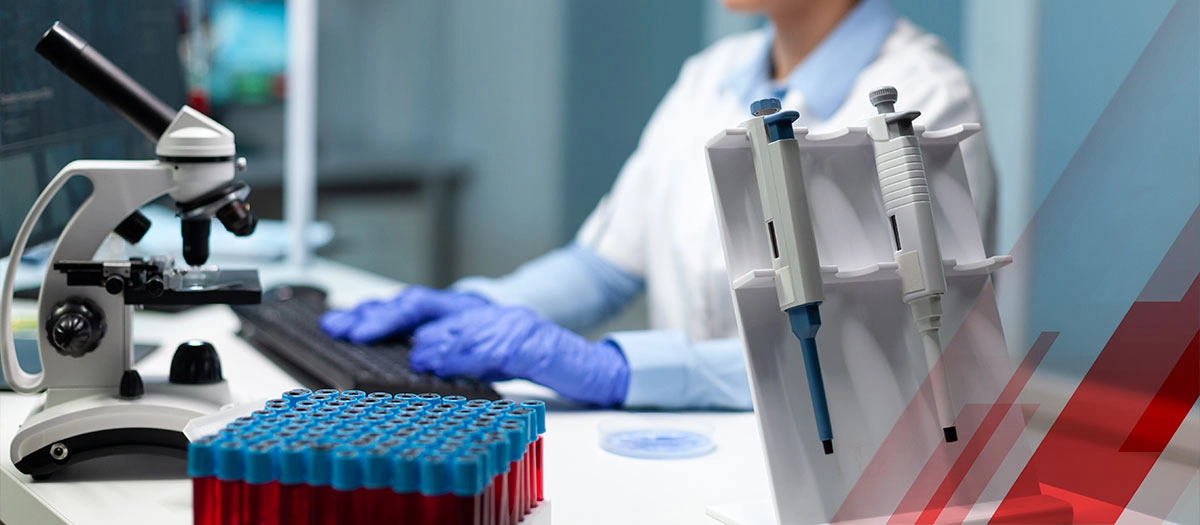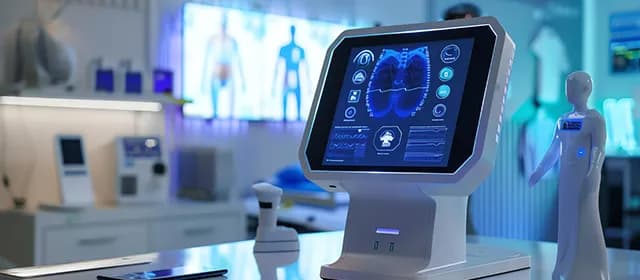Today, healthcare tests have become convenient and affordable with in-vitro diagnostics. They have changed the way tests are conducted. By just taking blood or tissue samples, these tests provide accurate and fast results. In this blog, we will explore how these revolutionary test approaches make healthcare testing more accessible, efficient, and reliable while improving the overall patient experience.
Understanding In Vitro Diagnostics
In vitro diagnostics (IVD) refers to medical procedures, tests, and experiments that are performed outside of a living organism, such as in a petri dish, test tube, or more complex equipment. These tests are conducted using samples taken from the human body, such as blood or tissue samples, and are used to detect diseases, conditions, and infections.
IVD tests are widely used in clinical practice to diagnose and monitor diseases, analyze their potential risks, and guide patient management. According to Kings Research, the in-vitro diagnostics market is anticipated to be valued at $176.23 billion by 2030.
Types of In Vitro Diagnostic Tests
IVD encompasses a wide range of tests used for diagnostic testing. Here are some common types of IVD products:
- Laboratory-Based Tests
These tests involve sending samples, such as blood or tissue, to a central laboratory for analysis. Laboratory-based tests often require sophisticated equipment and trained personnel.
- Point-of-Care Tests
Point-of-care tests are performed near or at the point of patient care, providing rapid results that can guide immediate medical decisions. These tests are designed for emergencies or resource-limited settings.
- Molecular Diagnostics
Molecular diagnostics involves the detection and analysis of genetic material, such as DNA or RNA, to diagnose diseases or identify genetic variations.
- Immunodiagnostics
Immunodiagnostics involves the detection and measurement of specific proteins or antibodies in the body. These tests are used to diagnose infectious diseases, autoimmune disorders, allergies, and certain types of cancer.
- Hematology Tests
These tests focus on the analysis of blood components, including red and white blood cells, platelets, and hemoglobin levels. These tests are used to diagnose and monitor conditions such as anemia, infections, and blood clotting disorders.
- Microbiology Tests
Microbiology tests are used to identify and describe microorganisms, such as bacteria, viruses, and fungi, in clinical samples. These tests help diagnose infectious diseases and assist in suitable treatment strategies.
- Genetic Testing
Genetic testing involves the analysis of an individual's DNA to identify genetic variations associated with inherited disorders. These tests can provide valuable information for personalized medicine and risk assessment.
5 Major Applications of In Vitro Diagnostics
IVD has a wide range of applications in healthcare, five of them include:
1. Disease Diagnosis
IVD tests are commonly used to diagnose various diseases and conditions. These tests analyze samples taken from the human body, such as blood or tissue. It helps detect the presence of specific pathogens, genetic mutations, or biomarkers associated with diseases.
2. Early Detection
Rapid diagnostic tests enable early detection and prompt response to outbreaks, helping to prevent the spread of diseases. This plays a crucial role in monitoring and controlling the spread of infectious diseases.
3. Monitoring and Management of Health Conditions
In vitro diagnostic products are used to monitor the progression of diseases and health conditions. They provide valuable information to healthcare providers for managing and adjusting treatment plans.
4. Risk Assessment
IVD tests are used to assess the risk of developing certain diseases or conditions. These tests can identify genetic predispositions or biomarkers associated with increased risk, allowing for early intervention or preventive measures.
5. Research and Development
IVD is essential in the research and development of new treatments and therapies. They provide valuable insights into disease mechanisms, treatment responses, and drug efficacy. Furthermore, it is used to evaluate the safety and effectiveness of new drugs and therapies in clinical trials.
Exploring the Latest In Vitro Diagnostics Market Trends
Below are the latest trends in the IVD sphere:
- Use of AI and ML
The integration of AI (artificial intelligence) and ML (machine learning) technologies in IVD is gaining traction. By analyzing large volumes of data, identifying patterns, and providing insights, AI and ML can enhance the efficiency and accuracy of diagnostic tests.
For example, diagnostics.ai has developed an automated analysis and reporting system for PCR testing that utilizes AI to improve the accuracy and efficiency of qPCR analysis. The system reduces the complexity of analysis, saves time, and optimizes patient care by delivering results faster with less manual intervention.
- Rising Focus on Liquid Biopsy
A liquid biopsy is a non-invasive diagnostic technique involving the analysis of biomarkers in body fluids such as urine, blood, or saliva. It is used for the detection and monitoring of diseases, like cancer.
In this field, Guardant Health offers the Guardant360 Response, a liquid biopsy test that tracks tumor genomics in real-time and identifies associated treatment options. It is a non-invasive blood test that analyzes circulating tumor DNA (ctDNA) to detect genetic variations and characterize the patient's cancer type.
- Increasing home-based testing
There is a growing trend towards home-based testing in the in vitro diagnostics sector. Home-based testing allows individuals to perform diagnostic tests in the comfort of their own homes, eliminating the need for visits to healthcare facilities. This trend has been accelerated by advancements in technology, such as the development of user-friendly testing kits and telemedicine platforms.
In vitro diagnostics companies like EverlyWell accelerate this trend by providing a wide range of at-home testing kits for various health conditions. They offer tests for allergies, hormones, metabolism, sexual health, and more. Users can collect their samples at home and send them to the company's certified laboratories for analysis.
To Summarize
In vitro diagnostics (IVD) play a crucial role in healthcare, as they facilitate disease diagnosis, treatment monitoring, and patient care. These diagnostic tests analyze samples to detect and measure various diseases. Various types of IVD tests cater to the diverse needs of individuals across the globe.
IVD tests are applied in various healthcare domains to the early detection and diagnosis of diseases, the research and development of various treatments, and the management of health conditions. The latest developments and trends in IVD technology have revolutionized healthcare in various ways. The rising use of AI ML, liquid biopsy, and increasing home-based testing have enabled early and accurate disease analysis, personalized treatment plans, and improved patient outcomes.




